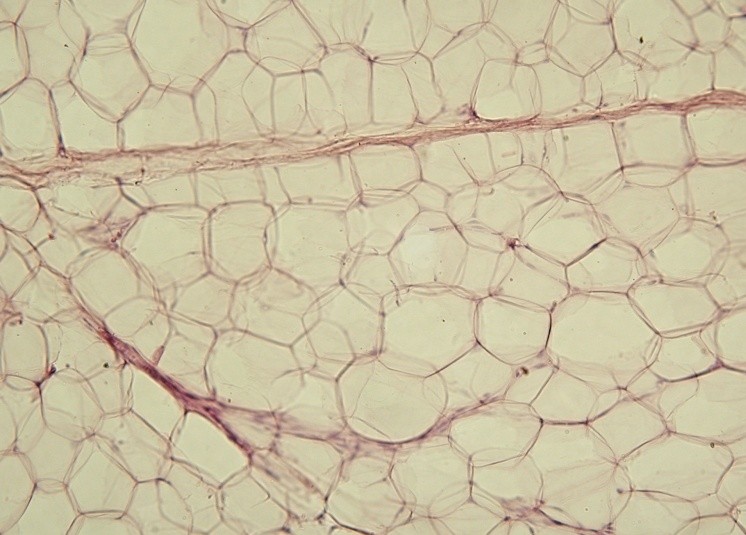Not all fat cells are created equal
Interview with
Chris - This week, researchers have made another interesting finding in regard to what actually happens when a person puts on a bit too much weight. Now not all fat storing cells, which are known as adipocytes, are equal it seems and from the Mayo Clinic, to tell us more, Michael Jensen.
Michael - We were trying to understand why, when some people gain weight, they gain it in their hips and thighs which seems to protect from cardiovascular disease and other people tend to gain it in their abdominal area which seems to put them at higher risk.
Chris - So, in other words, this is the apples and pears analogy, isn't it? People who are very apple shape, they put all the weight on around the middle have a very different risk of being overweight than people who put their weight on around their bum.
Michael - Yeah. That's what we were trying to find out. Is there something we can measure before you even gain weight that will predict where you're going to gain that weight? So we asked about 28 people who were normal weight, who'd never been overweight, and we're completely healthy to undergo some initial tests, including some fat biopsies, and then to really overeat for about 8 weeks to try to gain about 4 kilograms. And then the idea is to measure where they gain the fat and then to repeat the fat biopsies and see what had changed about their fat tissue.
Chris - So, by looking in the different zones in the body, you're asking: Do the fat cells change equivalently in the different anatomical zones, the abdomen versus around your hips for example? I guess to find out whether the cells there are behaving equivalently.
Michael - Yes, but also to see how they behave with regards to how much fat is gained in that area. So what we found is that the people who - when they gain weight in their abdomen, they gain it primarily by their fat cells getting bigger. When people gain weight in their hip and thigh area, their fat cells don't get bigger. They make more fat cells so that they keep their fat cell size on average, staying about the same. So the implication is, if you're putting weight on in the hip and thigh area, it's because you're creating new fat cells.
Chris - Well that flies in the face of what I guess doctors have been learning at medical school for many years, which is that after a certain age, you don't make any more fat cells. You just get fatter by making the ones you have got get bigger.
Michael - That's right and so that was what was so striking to us. This has completely overturned everything we've been taught.
Chris - Okay, so you've got this interesting finding. People put on increased numbers of cells around their hips. They have increasing size of cells in the abdomen. Where next? Where does this leave us?
Michael - Well, the other thing we found is that the people who did make more cells in their thighs were less likely to gain weight in the abdomen, suggesting that it may be the ability to create new fat cells in the hip and thigh area is one thing that might protect you from getting bigger cells in the abdominal area.
Chris - In other words, it's a word of sequestration process. If you're making new cells in your hips, you're not putting the fat around your middle which is the fat we know is associated with ill health.
Michael - Exactly, sort of the good news, bad news story. The bad news is you're making more fat cells which most people wouldn't want to do. The good news is that those fat cells are doing exactly the job you want them to do. They're having the fat stored benignly inside fat cells rather than going into bigger fat cells or worse yet, going into organs like liver and muscle where the fat can cause some insulin resistance.
Chris - So does this mean that one way we could tackle obesity and not just obesity, the linked condition diabetes which is of course much more common in people who gain too much weight? If we could find what is causing those cells to behave differently in those two areas and then in people who have a tendency to put weight on around the middle, we could make the fat instead be directed towards this less unhealthy distribution around the hips. Then we might have a way of reducing the risk of someone going on to develop an obesity linked disorder or disease.
Michael - Yes, that's exactly right. That's what we're hoping is that even if we can't prevent people from becoming obese which it doesn't seem we're having very good luck at, if we could at least prevent them from becoming ill as a result of the weight gain, that would be at least some accomplishment.
Chris - How close are you to being able to realise that, to being able to work out what is causing these cells to behave differently, not just in different bits of the body, but in different people?
Michael - Not as close as I would like to be, I'm afraid. I think the next steps are to begin looking much more closely at the pre-adipocytes, the precursors to fat cells in the different depots and specifically in people who we know already have gained weight preferentially in the hip and thigh area versus those who are not able to and look to see what is it about those cells that are different, and not just the mature adipocytes, but the pre-adipocytes.
Chris - Certainly food for thought, isn't it? That was Michael Jensen who is from the Mayo Clinic, and that work was published this week in the journal, PNAS.
- Previous The Census of Marine Life
- Next Planet Earth - Orang-utan posture










Comments
Add a comment